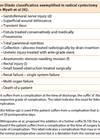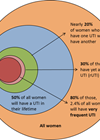Features archive for March 2016
Use of Clavien-Dindo classification in urology part 1 – pelvic surgery
There is no widely accepted system to classify postoperative complications. It is necessary to compare the outcome and complications while validating a new surgical procedure or one of the surgical approaches of a particular condition. Several parameters have long been...
What’s in a name?
Kate Granger is a doctor and the founder of the #hellomynameis campaign; she is also a cancer patient. In this article she explains why she started the campaign, and why patient-centred care starts with an introduction. Chris and me the...
The role of specialist therapeutic radiographers in the treatment and care of men with prostate cancer
The Statement of Intent: Cancer Strategy for England: 2015-2020 indicates that the number of people diagnosed with cancer each year will continue to grow rapidly due to the ageing population. There is also a requirement to diagnose and offer patients...
ICS updates on continence care: what’s hot in physiotherapy after 80 years?
Origins of pelvic floor physiotherapy Physiotherapy, and in particular pelvic floor muscle training (PFMT) is nowadays first-line management for pelvic floor dysfunction (PFD). PFMT is originally attributed to Dr Arthur Kegel, hence the term Kegel exercises. Indeed, he was the...
Management of recurrent cystitis
Acute uncomplicated infective cystitis is most commonly seen in healthy women with a frequency of around 0.5-0.7 episodes per woman per year [1]. Around 10% of women report having had an episode of urinary tract infection (UTI) each year and...
What is the role of evidence-based medicine in urology?
The concept of ‘evidence-based medicine’ (EBM) was first developed in the early 1990s and was described as “the conscientious, explicit and judicious use of the current best evidence in making decisions about the care of individual patients” by the recently...









